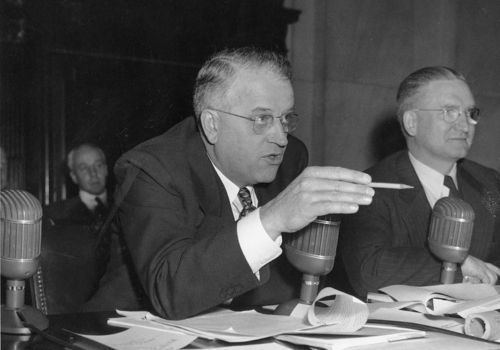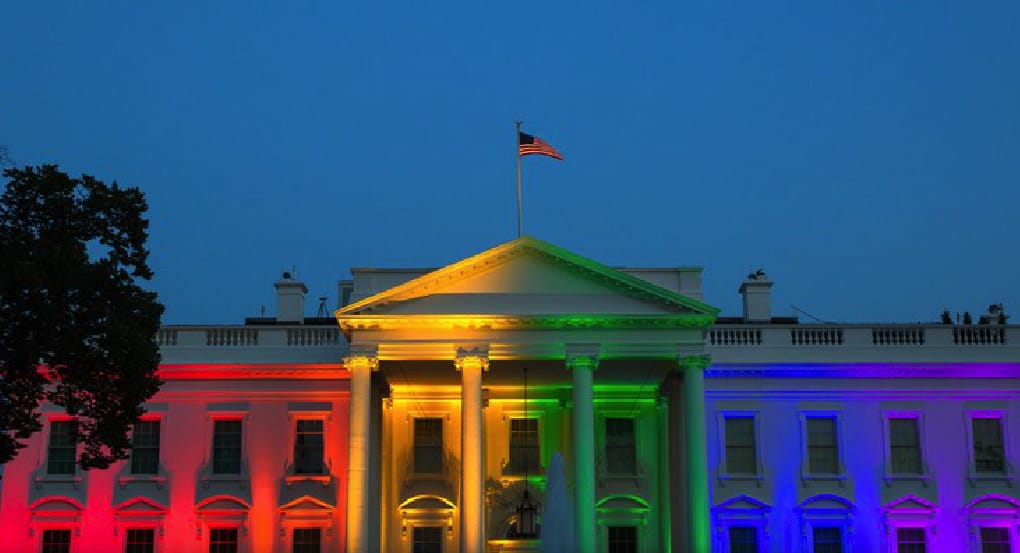By Victoria A. Brownworth, News Is Out
Historian warns of potential resurgence of anti-Queer discrimination, citing similarities between historical persecution and Trump's current campaign
There is perhaps no more critical election in U.S. history than the one in which Americans will vote on Nov. 5. Vice President Kamala Harris has said that former President Donald Trump poses a threat to democracy and myriad aspects of American lives.
Harris has cited the Heritage Foundation’s Project 2025, a plan to remake the American government, as an example. It will deeply threaten historically marginalized communities, notably immigrants and LGBTQIA2S+ people.
While Trump claims to know nothing about Project 2025, members of his former administration were among its authors and architects. Harris has an analysis of it posted on her website and she referenced it in the Sept. 10 debate.
Americans have witnessed first-hand the impact rumor and innuendo can have on communities and the entire country. During the (recent) debate, when Trump asserted that Haitian immigrants in Ohio are eating pets, ABC moderator David Muir debunked the claim on-air in real time. Since then, various Ohio officials have exposed the false claim, including Ohio's Republican governor, (Mike DeWine).
The Red Scare cued the Lavender Scare
This situation is similar to what happened when the Red Scare of the 1940s and 50s spread across the nation. Wisconsin Sen. Joseph McCarthy spread rumors about Communists infiltrating America and created the House Un-American Activities Committee (HUAC) hearings to spotlight people whom he said threatened national security.
In turn, such powerful rumor and innuendo birthed the Lavender Scare: a belief that "homosexual" men and women also threatened the U.S. because they were considered “sexual perverts” and “deviants.” McCarthy claimed gay and lesbian people working for the government were more vulnerable to Soviet blackmail and were, therefore, a national security risk as the Cold War ratcheted up. By 1947, Washington officials had announced the “Sex Perversion Elimination Program.”
The subversive aspects of both homosexuality and Communism became linked. In 1950, even the Communist Party had issued a warning about the threat of homosexuality.
The Lavender Scare affected one million
On April 27, 1953, Eisenhower issued Executive Order 10450, leading to the expulsion of Queer people from all levels of American government. The new policy was succinct and unforgiving: anyone suspected of being lesbian or gay was summarily dismissed. No protections existed for these women and men.

In his 2020 book, The Deviant’s War: The Homosexual vs. the United States of America, Eric Cervini reported on the prosecution of around one million gay or lesbian individuals in the U.S. from 1945 to 1960. In addition, the 2017 documentary “The Lavender Scare” shows that even after men and women were purged from their government jobs, they were pursued.
The impact went far beyond job losses. Some people died by suicide after being outed because the repercussions were so devastating on multiple levels. People were labeled as deviants and ostracized in their professions.
As renowned activist Harry Hay would later be quoted in the New York Times, “We lived in terror almost every day of our lives.”
Eisenhower precedes Project 2025
Eisenhower’s acceptance of McCarthy’s actions (in eliminating) Communists and Queer people has been minimized, but the President didn't stop there. Only two months later, Julius and Ethel Rosenberg were executed in New York for espionage. They were the first American civilians executed for espionage during peacetime.
Then, Eisenhower’s “Operation Wetback” impacted (Latine and Hispanic) immigrants, including American citizens, who had legally entered the U.S. through joint immigration programs with Mexico. Many became naturalized citizens. Operation Wetback sent them back to Mexico in much the way Trump asserts he will do if re-elected. It is also a foundational tenet of Project 2025.
Lessons from the Lavender Scare
Eisenhower’s association with McCarthy highlights how far he was from a benign leader. He was, in fact, one of the most dangerous for Queer people at the time and historically.
As the election approaches, consider the ways a president and an ideologue senator can combine to threaten, terrorize and even lead to the deaths of whole groups of marginalized people.
Victoria A. Brownworth is a Pulitzer Prize-nominated and NLGJA award-winning journalist. She also won the Lambda Literary Award for Coming Out of Cancer: Writings from the Lesbian Cancer Epidemic.
This opinion has been edited for length. Republished with permission from Philadelphia Gay News. Read the original article here.


